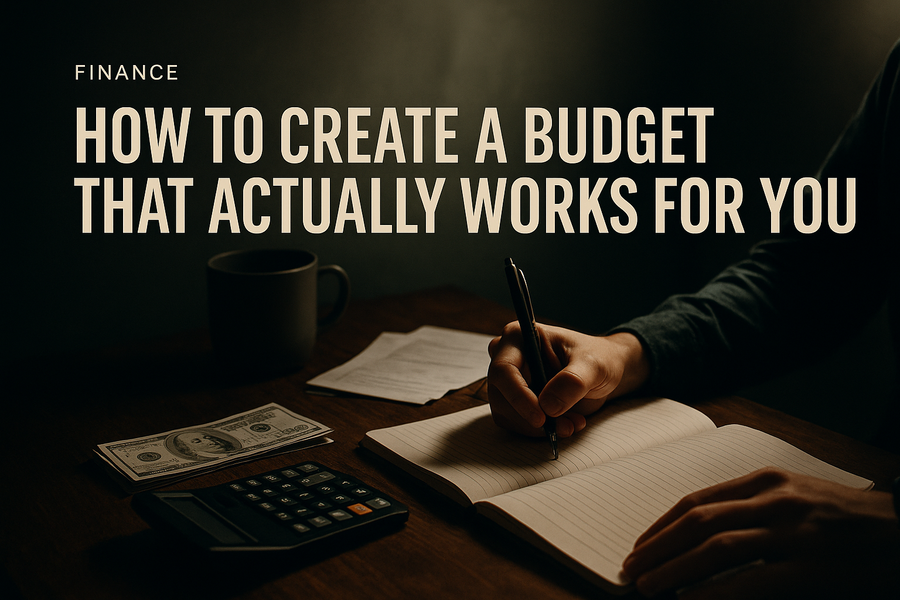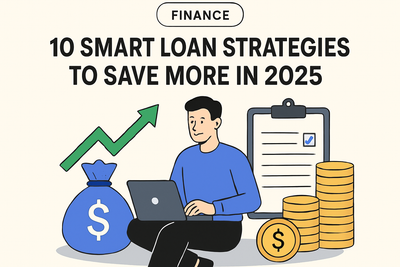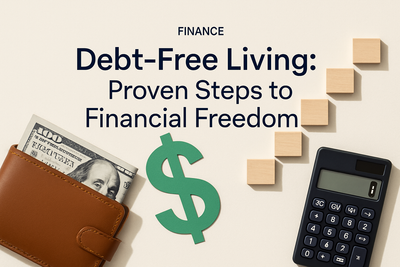
Introduction
Creating a budget is often seen as a chore—something restrictive or hard to maintain. But what if your budget could be empowering? What if, instead of feeling like you're cutting back, you felt in control, confident, and on track toward your financial goals? The truth is, budgeting doesn't have to be difficult or limiting. In fact, when done right, it can help you take charge of your money and reduce financial stress.
In this article, we’ll walk you through how to create a budget that actually works for you—not just another spreadsheet you'll abandon next week.
Step 1: Understand Your Why
Before diving into spreadsheets or apps, start with your motivation. Are you saving for a house? Trying to eliminate debt? Preparing for a big life change like a wedding or baby? Defining your "why" will keep you focused and motivated even when the going gets tough.
Action Tip: Write down your top three financial goals and refer back to them regularly.
Step 2: Track Your Income and Expenses
You can’t manage what you don’t measure. Spend a month tracking all income sources and every expense—yes, even the $3 coffee.
Ways to Track:
- Use budgeting apps like Mint or YNAB (You Need A Budget)
- Review bank statements
- Keep a daily spending journal
This helps you identify where your money is going and uncovers spending patterns that may surprise you.
Step 3: Categorize and Prioritize Spending
Once you know your spending habits, break expenses into categories like:
- Fixed costs (rent, utilities, insurance)
- Variable costs (groceries, gas, entertainment)
- Irregular or annual expenses (car registration, holiday gifts)
Then, prioritize based on needs vs. wants. This doesn’t mean you can’t enjoy life—it means making conscious choices aligned with your goals.
Step 4: Choose a Budgeting Method
There’s no one-size-fits-all solution. Explore different budgeting methods and pick one that suits your personality and lifestyle:
Zero-Based Budgeting
Assign every dollar a job. Income – Expenses = $0. Great for detail-oriented folks.
The 50/30/20 Rule
Allocate 50% to needs, 30% to wants, and 20% to savings and debt repayment.
Envelope System
Use physical or digital envelopes for spending categories to control variable spending.
Experiment and tweak until you find your groove.
Step 5: Make It Flexible and Realistic
Life happens. Budgets should be able to adapt.
- Overestimate variable expenses
- Build a buffer for unexpected costs
- Reassess monthly to adjust for changes
Remember, a budget isn’t about perfection—it's about progress.
Step 6: Automate and Simplify
Set up automatic transfers for savings and bill payments.
- It reduces stress and avoids late fees
- Makes saving feel effortless
Consider using automation tools or apps to streamline your system.
Step 7: Monitor Progress and Adjust
Review your budget regularly:
- Weekly check-ins to monitor spending
- Monthly reviews to assess progress toward your goals
Celebrate small wins and adjust where needed. Life evolves, and so should your budget.
Conclusion
A budget that actually works for you is one that’s aligned with your values, realistic for your lifestyle, and flexible enough to adapt over time. By understanding your financial goals, tracking your cash flow, and choosing a method that fits your needs, you’ll not only gain control over your finances but also set yourself up for long-term success.
Start small. Stay consistent. And remember—your budget is there to serve you, not the other way around.







